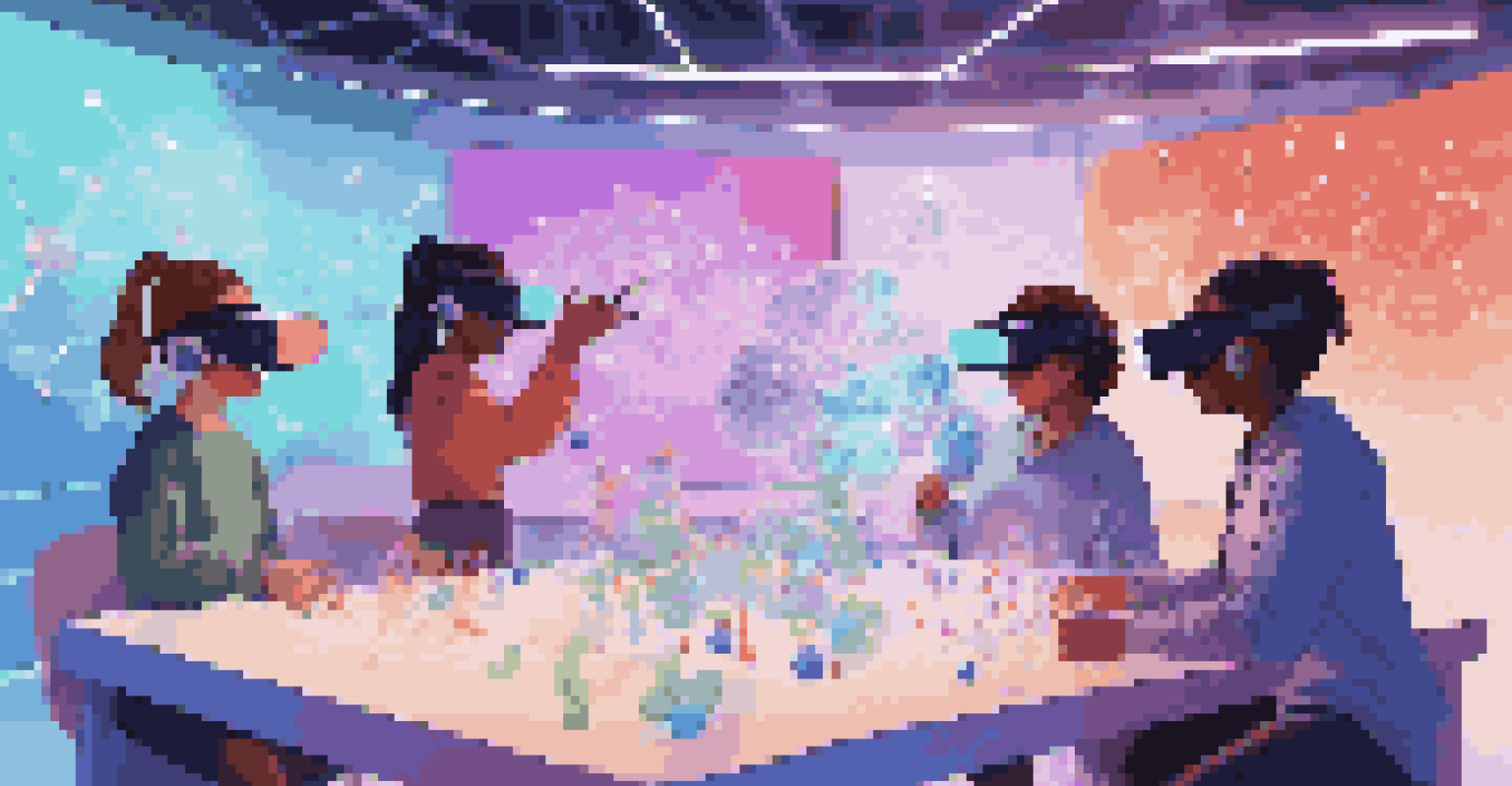How to Use Virtual Reality for Immersive Learning Online

Understanding Virtual Reality in Education
Virtual reality (VR) is a technology that creates simulated environments, allowing users to immerse themselves in a digital world. In education, this means students can explore places and scenarios that would be impossible to access in real life. For instance, imagine walking through ancient Rome or conducting a virtual dissection in a biology class.
Virtual reality allows us to immerse ourselves in a different world, enabling us to experience things we may never have the opportunity to in real life.
This immersive experience not only captivates learners but also enhances retention and understanding of complex subjects. VR offers a 360-degree perspective, making lessons more interactive and engaging. By stepping into the material, students can grasp concepts with a depth that traditional methods often lack.
Moreover, VR can cater to various learning styles—whether visual, auditory, or kinesthetic. It’s like having a personal tutor who adapts the lessons based on how you learn best, providing a unique opportunity for personalized education.
Benefits of VR for Immersive Learning
One of the standout benefits of using virtual reality in education is the ability to create real-world scenarios. For example, medical students can practice surgeries in a safe, controlled environment before ever touching a scalpel. This hands-on approach builds confidence and skills without the risk that comes with real-life practice.

Additionally, VR fosters collaboration among students, even when they are miles apart. Imagine a group of learners from different countries coming together in a virtual classroom to solve problems or work on projects. This kind of collaboration not only builds teamwork skills but also exposes students to diverse perspectives.
VR Enhances Learning Engagement
Virtual reality immerses students in dynamic environments, making complex subjects more engaging and easier to understand.
Furthermore, VR helps to bridge the gap for students with learning disabilities. By providing a multisensory experience, it can make learning more accessible and engaging for everyone, ensuring that no one is left behind.
Choosing the Right VR Tools for Learning
When selecting VR tools for immersive learning, it’s essential to consider the content and the audience. Some platforms focus on specific subjects, like science or history, while others offer a broader range of experiences. Researching and trying out different options can help educators find the best fit for their curriculum.
Education is not the filling of a pail, but the lighting of a fire.
Popular VR platforms like Google Expeditions or Oculus for Business provide a wealth of resources and experiences tailored for educational use. These tools often come with built-in lesson plans and guides, making it easier for educators to integrate VR into their teaching strategies.
Keep in mind the technical requirements as well—some VR experiences may require more advanced hardware. Ensuring that the necessary equipment is available and compatible with the chosen software is crucial for a smooth learning experience.
Creating Effective VR Learning Experiences
To create effective VR learning experiences, it’s important to start with clear learning objectives. Educators should ask themselves what they want students to achieve and how VR can facilitate that. For example, if the goal is to enhance spatial awareness, a VR experience simulating architectural design could be beneficial.
Incorporating interactive elements into the VR experience can also significantly enhance engagement. This could involve quizzes, challenges, or even role-playing scenarios where students must make decisions based on what they observe in the virtual world. The more involved learners are, the more they will benefit from the experience.
Collaboration Across Distances
VR fosters teamwork among students worldwide, allowing diverse perspectives to enrich learning experiences.
Finally, always seek feedback from students after VR sessions to refine and improve future experiences. Understanding what worked well and what didn’t can help educators tailor their approaches to maximize learning outcomes.
Integrating VR into Online Learning Programs
Integrating VR into existing online learning programs can be a smooth process with the right strategy. Start by piloting small VR modules alongside traditional lessons to gauge student interest and effectiveness. This allows educators to experiment without overwhelming themselves or the learners.
As students become more comfortable with VR, educators can gradually expand the use of immersive experiences in their curriculum. This step-by-step approach also allows for adjustments based on student feedback and learning outcomes, ensuring that the integration is beneficial.
Additionally, consider pairing VR with other online tools, such as discussion forums or collaborative projects. This hybrid approach can enhance the overall learning experience and reinforce the concepts taught in VR.
Challenges and Considerations in VR Learning
While the benefits of VR in education are clear, there are challenges to consider as well. One major concern is the cost of VR equipment and software, which can be a barrier for many institutions. However, as technology advances, prices are gradually decreasing, making VR more accessible for educational purposes.
Another challenge is ensuring that all students feel comfortable using VR technology. Some learners may experience discomfort or motion sickness, so providing alternatives and support is crucial. Educators should familiarize themselves with these issues to create an inclusive environment.
Addressing Accessibility in Education
By providing multisensory experiences, VR helps make learning more accessible for students with different learning needs.
Lastly, educators must remain vigilant about the content being used in VR. Ensuring that it aligns with educational standards and promotes positive learning experiences is key to harnessing the full potential of this technology.
The Future of VR in Online Education
The future of VR in online education looks promising, with ongoing advancements in technology and content development. As VR becomes more mainstream, we can expect to see even more innovative applications in various subjects and fields of study. For instance, imagine virtual job shadowing for high school students exploring career options.
Additionally, the rise of 5G technology will likely enhance the quality of VR experiences, leading to smoother interactions and more detailed environments. This means that learners could access high-quality VR experiences from anywhere, further breaking down geographical barriers in education.

As we move forward, the key will be to balance technology with pedagogy. By thoughtfully integrating VR into learning experiences, educators can create dynamic and engaging environments that prepare students for the challenges of the future.